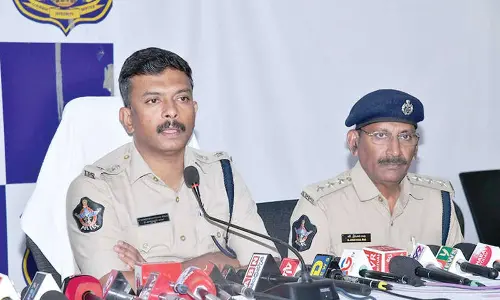Icon of idealism!
The story of Sri Rama is a story of a higher principle in private and public life. It is the story of an enduring social structure and familial relations. It is the touchstone for marital commitment and of valour and victory of good over evil
"He is with a controlled self, highly valorous, resplendent, steadfast…a wise one, moralist, eloquent, glorious, and a destroyer of enemies…He is built proportionately physically, with limbs poised symmetrically, sinew-chested, wide-eyed, complexioned charmingly..."
These are some of the few superlative adjectives that Sage Narada uses to describe Sri Ram when Valmiki seeks advice on what kind of a hero to depict in his epic poem Ramayana.
No wonder Rama is a darling of Telugu filmmakers. As cinema evolved as an extension of theatre, street plays and classical dance dramas, it was a natural progression for filmmakers to tell stories from mythology and Puranas. Even as Ramayana and Mahabharata were epics that provided a classical narrative, that audiences easily related to, the innumerable sub-tales that populated the epic poems provided storylines entertainingly adaptable to the silver screen. Hence the dozens of films in Telugu, first in black and white and then in colour, telling the story of Rama. Sri Ram's victory over Ravan starting from the comprehensive 'Sampoorna Ramayanam', to his relationship with Sita in 'Sita Kalyanam', with their sons in Lava Kusha and with the super devoted Hanuman in Sri Rama Anjaneya Yuddham was the same story told again and again, from various angles and people lapped them all up.
Sri Rama is a hero who is the embodiment of all virtues. A hero who remained a prototype for all heroes for ages to come. And that is the reason why Rama continues to be an icon for filmmakers. For a script that invariably revolves around the male protagonist, the writers could not have found a better model on whose lines they could have moulded their hero. 'Maryada Ramanna'… 'Purushottam Ram', the best man, who could ever be. An obedient son, a quick and talented student, a responsible brother, an ardent lover, a devoted husband, a matchless warrior and a resplendent king who walked on the path of Dharma, providing the archetypal 'Rama Rajya', Rama is the quintessential emblem of the Indian ethos.
Would the image of Sri Rama have been so deeply imprinted on the Telugu consciousness if it weren't for the way he was personified by NT Rama Rao? Probably not! It would seem that our learning of Ramayana as a literary masterpiece found manifest expression in the way it was presented on the silver screen, with an actor, adopting not just the physical description of Rama but his bearing and behaviour too. For generations of Telugu cinema viewers, NTR was the essential Sri Rama, though there have been some feeble portrayals by actors such as Shobhan Babu and Harnath.
One director who submitted himself to the idea of Rama and Ramayana and made it a watermark for all the tales he told across the years was Bapu. Bapu's devotion towards Rama flows through every frame he created, every painting he made, a huge body of work arguably unparalleled in Indian art history. His scripts drew inspiration from the epic, his characters made with fragments taken from the characters from the legend. The inspiration and the studious attention to Ramayana, his unflinching devotion to Lord Rama, his affection for Sita and Hanuman, his sheer ecstasy in telling the story, again and again, is deliciously palpable to the viewers of all his films, in imagery, in words, in lyrics, in music and in spirit.
'Andala Ramudu' of 1973 is a story set on a journey towards Bhadrachalam, 'Rambantu' was a movie that based the protagonist on the loyal Hanuman. Bapu's work on Ramayana included the lyrical 'Seeta Kalyanam' and ended with the recent 'Sri Rama Rajyam', but his evergreen classic 'Mutyala Muggu' was nothing but reenacting the dynamics of the Seeta-Sri Rama relationship, their separation in the guise of a social drama. Even Bapu's casting of his heroines as demure but strong-willed women, their traditional appearance with long hair, kohl-painted eyes and cotton sarees are figments of his own adoration for the imagined persona of Sita.
As revered, it is, Ramayana also evoked much criticism too, but the charm of the story and the charisma of its protagonist survive the test of time, with the whole galaxy of associated characters such as Sabari, Ahalya, Guha, Vali finding cameo space on the silver screen.
The story of Sri Rama is a story of a higher principle in private and public life. It is the story of an enduring social structure and familial relations. It is the touchstone for marital commitment and of valour and victory of good over evil. It is the triumph of Dharma, of the way things are done the right way, even in the vanquishing of the enemy. And Sri Rama, Lord Rama, is the icon that symbolises profound emotion as well as incomparable idealism for people of this land.


















